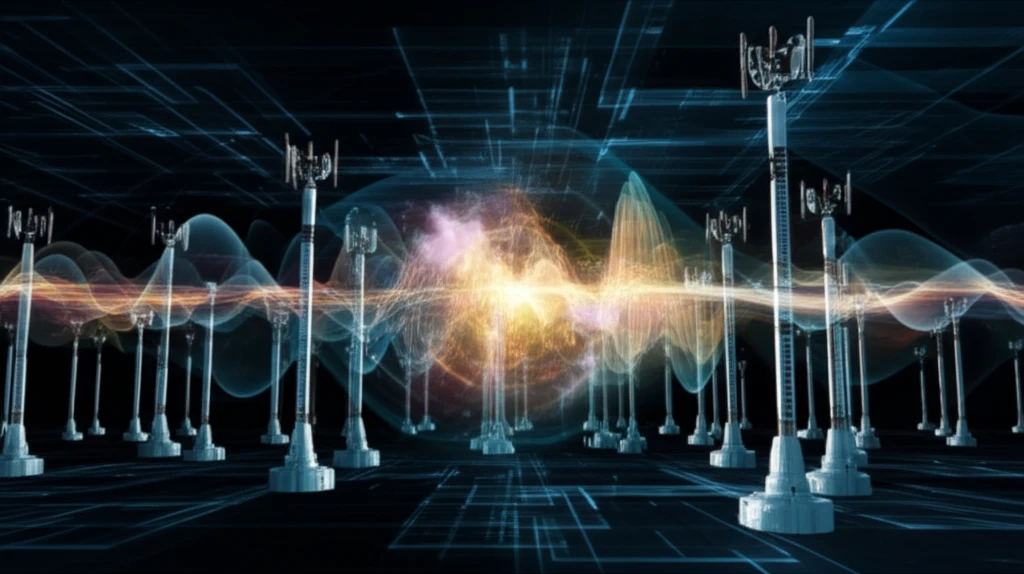
Massive MIMO: How Calibration Tech Boosts Your 5G Experience
"Unlock faster, more reliable wireless with innovative I/Q imbalance compensation in Massive MIMO systems."
Imagine downloading a movie in seconds or experiencing lag-free virtual reality on your smartphone. That's the promise of Massive MIMO (Multiple-Input Multiple-Output) systems, a core technology in modern 5G networks. Massive MIMO uses numerous antennas at the base station to transmit data to multiple users simultaneously, boosting network capacity and speed.
However, the real world isn't perfect. A significant challenge lies in maintaining the channel reciprocity between uplink and downlink signals. Ideally, the signal path should be identical in both directions, but imperfections in radio frequency (RF) devices can throw things off, leading to what's known as I/Q imbalance. This imbalance distorts signals, reduces efficiency, and ultimately degrades the user experience.
Recent research tackles this problem head-on, proposing advanced calibration techniques to compensate for I/Q imbalances in Massive MIMO systems. By using sophisticated algorithms and channel estimation methods, these techniques aim to restore the integrity of wireless signals, ensuring faster and more reliable connections for everyone.
Decoding I/Q Imbalance: The Enemy of Perfect Signals

I/Q imbalance arises from imperfections within the radio frequency (RF) circuitry of wireless transceivers. Ideally, the in-phase (I) and quadrature (Q) components of a signal should be perfectly balanced – equal in amplitude and orthogonal (90 degrees apart) in phase. However, manufacturing variations and component limitations can lead to amplitude and phase mismatches, causing signal distortion.
- Reduced data rates: Signal distortion makes it difficult to transmit data at the highest possible speeds.
- Increased error rates: Distorted signals are more prone to errors during decoding, requiring retransmissions and slowing down the overall communication.
- Limited range: I/Q imbalance can reduce the effective range of wireless signals, requiring more base stations for coverage.
- Compromised user experience: Ultimately, these issues translate to slower downloads, laggy video streams, and unreliable connections for end-users.
The Future of Wireless: Clearer Signals, Faster Connections
The research demonstrates that compensating for I/Q imbalance can significantly improve the performance of Massive MIMO systems. By using advanced calibration algorithms, it's possible to restore signal quality, increase data rates, and enhance the overall user experience.
While these algorithms show great promise, further research is needed to refine and optimize them for real-world deployments. Future work could focus on:
<ul><li>Verifying the compensation methods on semi-physical simulation platforms.</li><li>Reducing the complexity of the algorithms to minimize computational overhead.</li><li>Addressing frequency pollution effects.</li></ul>With continued innovation in calibration techniques, we can unlock the full potential of Massive MIMO and deliver the next generation of wireless experiences.
